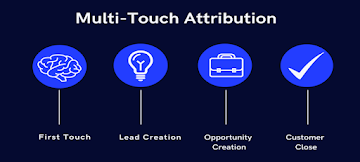Strategies that make your strategic enrollment management planning successful : Virtue Analytics
The college experience isn't the same as it was 10 years ago. The higher-education administrators are working to increase the diversity of gender and ethnicity within the classrooms. They're also utilizing technological advances to improve retention as well as the general college experiences for the students. These dramatic changes in higher education have taken enrollment management to a new level.
To stay on top of the economic and social changes that are
being wrought by the younger generation of students in higher education,
managers must upgrade their strategies for student enrollment. While different
campuses have different needs, adopting some of the fundamental strategies
mentioned below can help college administrators manage the enrollment process more efficiently.
Focus on Realistic Goal-Setting
The first step in achieving success in managing enrollment is to establish realistic goals for enrollment. Because goal-setting is an abstract task, enrollment managers could have a difficult time establishing feasible goals while also making sure that each member of the panel (executive administrators, faculty, and executives) has a similar level.
The key to creating an
effective action plan is to understand current trends, enrollment patterns,
resource availability, time, and financial constraints, and take these factors
into account. Sort targets by demographics, ethnicity, geography, by counselor,
high school, and zip code to make it easier. Maintain strong communication
within the panel to ensure that each member has the opportunity to voice their
concerns about the established goals and follow up weekly.
Make an investment in an individualized model of recruitment
Examining every college application separately using multiple enrollment markers is a lengthy and tedious task for the enrollment manager. To reduce the time needed to oversee the process of recruiting, colleges are making investments in analytics-based data personal recruitment models. Through these models, college administrators can adopt a more personalized approach to enrollment, making it easier to find the most skilled talent pool. The data from these models can aid in the development of new enrollment strategies that fit the structure of your university.
Create a strong communication flow
In the course of recruitment, communication between college
students is often neglected. Colleges are receiving inquiries from students
about enrollment through multiple channels like emails, websites, social media,
and printed materials. It is difficult to keep a balance and consistent flow of
information. But, putting in efforts to increase communication between the
institution and potential students could result in a positive recruiting
strategy if implemented properly. Parents play an important role in the college
search process, which is why it's crucial to communicate with them too.
If you’re interested in leveraging the ever-expanding benefits of data analytics in the higher education enrollment system, consult Virtue Analytics.
We offer extensive analytics-based college enrollment
management solutions to higher education institutions. Through our
enrollment management platform, you can increase student yield and minimize the
possibility of student withdrawal.


.png)
Comments
Post a Comment